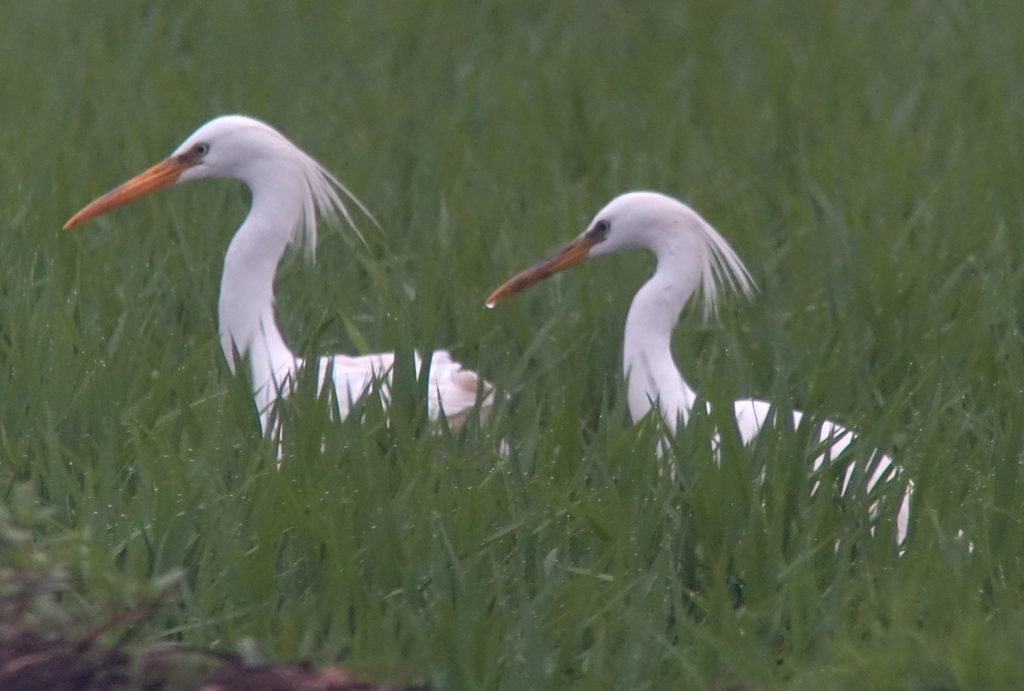Funded by the wonderfully-ethical company Lush, this survey was conducted as part of a larger project we are now starting on Baekryeong Island with several partners, including (of course!) the Hanns Seidel Foundation.
In often poor weather conditions (with days of dense fog and occasional rain interspersed with briefer periods of sunshine), this particular survey required early starts (typically 4AM), and was focused on ten areas on the island with wetlands and waterbirds. The main aim was to establish a decent baseline with which to help assess the success of proposed conservation initiatives on breeding bird populations and related wetland biodiversity.
 The ten survey areas (with thanks to Google Earth).
The ten survey areas (with thanks to Google Earth).
While a fuller report is now being prepared (to share with Lush and decision-makers and any interested members – ALWAYS the “Birds Korea way”!), in brief I found 76 species of bird, 26 of which could be confirmed as Baekryeong-breeders. An additional 36 species were suspected of breeding (many of which were also suspected or proven to breed in earlier years).
A few stand-out species include:
Black-faced Spoonbill Platalea minor. Four or five breeding pairs of this globally Endangered species were found, with ten recently-fledged young. Adults were found feeding in rice-fields in several parts of the island early in the morning.
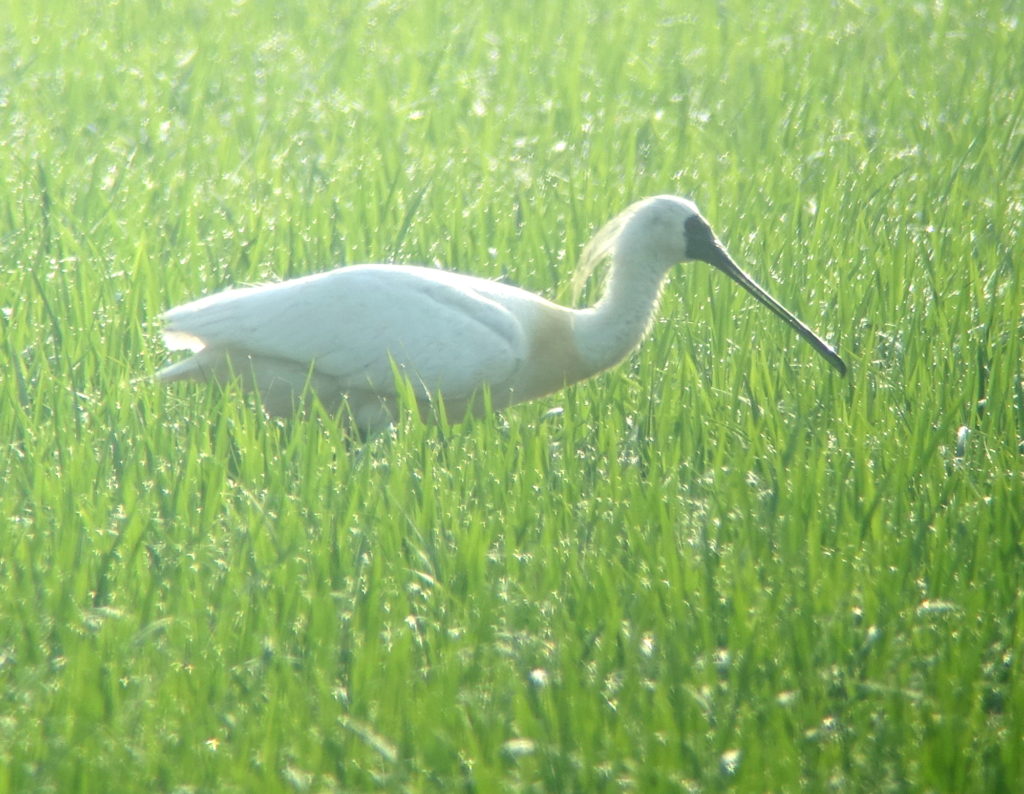
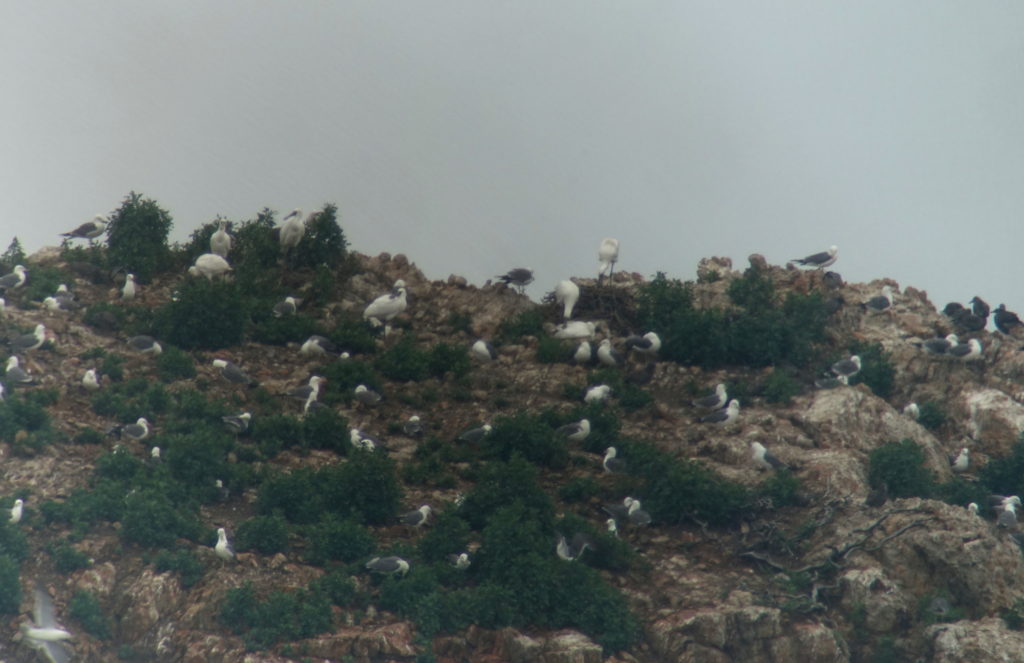 Black-faced Spoonbills: Adult feeding in rice-field; and young birds in the (happily!) inaccessible breeding colony © Nial Moores
Black-faced Spoonbills: Adult feeding in rice-field; and young birds in the (happily!) inaccessible breeding colony © Nial Moores
Chinese Egret Egretta eulophotes. A total of 20 individuals of this globally Vulnerable (and apparently rapidly-declining species) were logged, comprised of four or five breeding pairs, and at least seven young (with a further two young of either this species or of Little Egret E. garzetta – seen at long range in the same area). All of the feeding birds were seen in the same few rice-field areas where mud-loach sp. appeared to be especially abundant based on feeding rates.

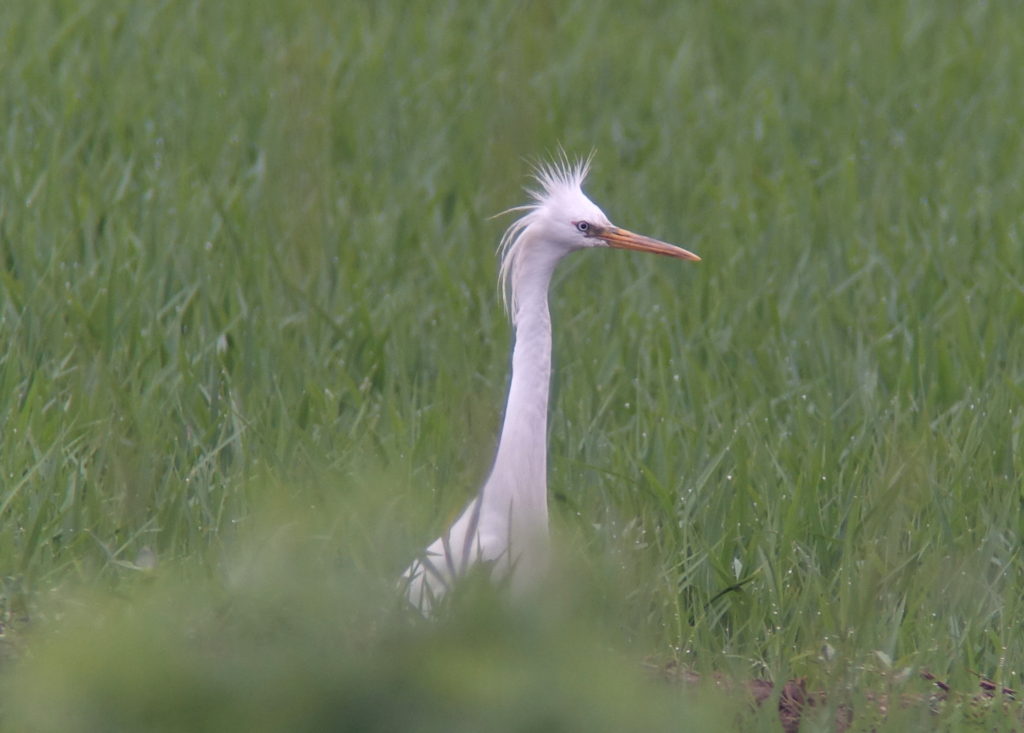 Chinese Egret © Nial Moores
Chinese Egret © Nial Moores
Ruddy-breasted Crake Porzana fusca. Heard in four different parts of the island, with perhaps 6-7 territories.
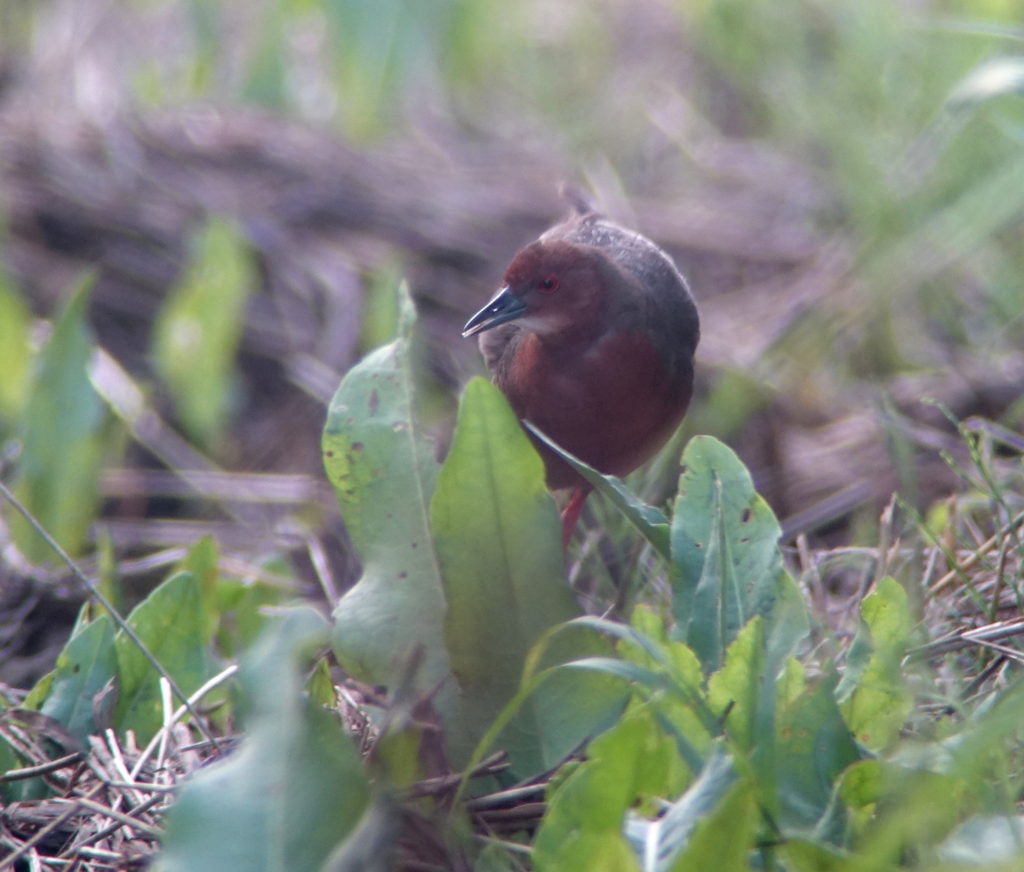
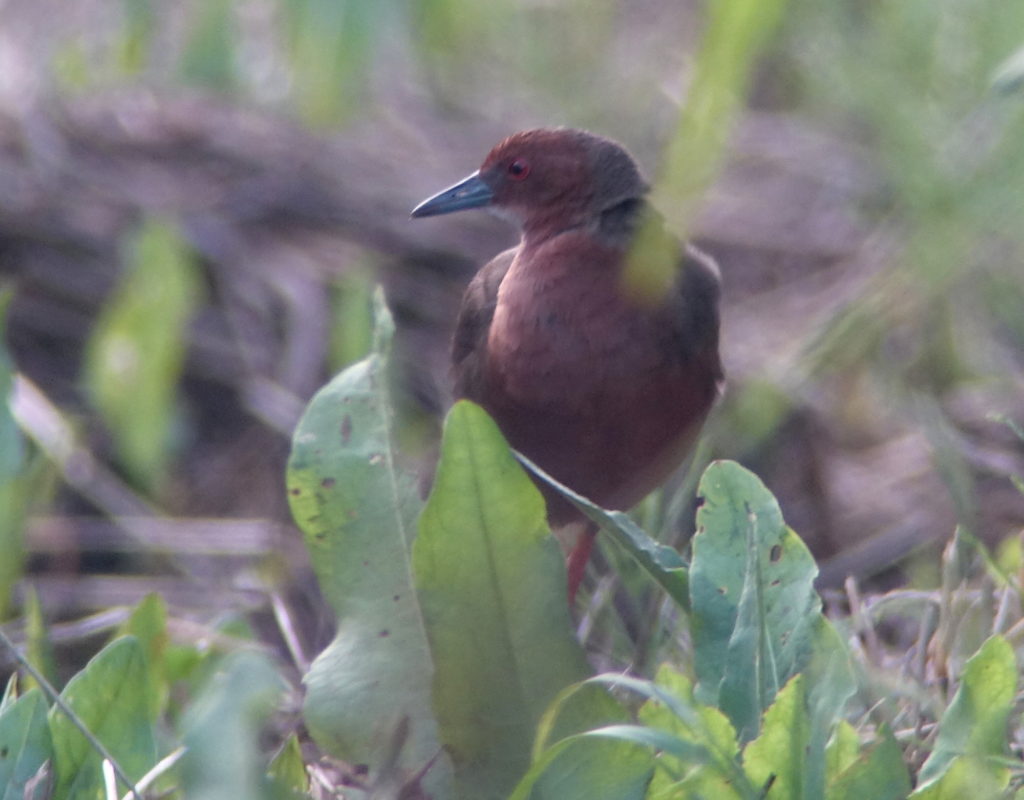 Ruddy-breasted Crake © Nial Moores
Ruddy-breasted Crake © Nial Moores
Watercock Gallicrex cinerea. Only two adult males in territory were found.
Far Eastern Oystercatcher Haematopus (ostralegus) osculans. At least 25 individuals were present, with probably six territories. However, only two young were seen.
Black-tailed Gull Larus crassirostris. Abundant, with probably 15,000 seen in the areas visited. Of some concern, although birds appeared no longer to be sitting on eggs, only 500 young were counted in the main colony of c. 7,000 breeding pairs.
Mongolian Gull Larus mongolicus. Much scarcer on the island than Black-tailed Gull, with a total of only eight adults and four young found.

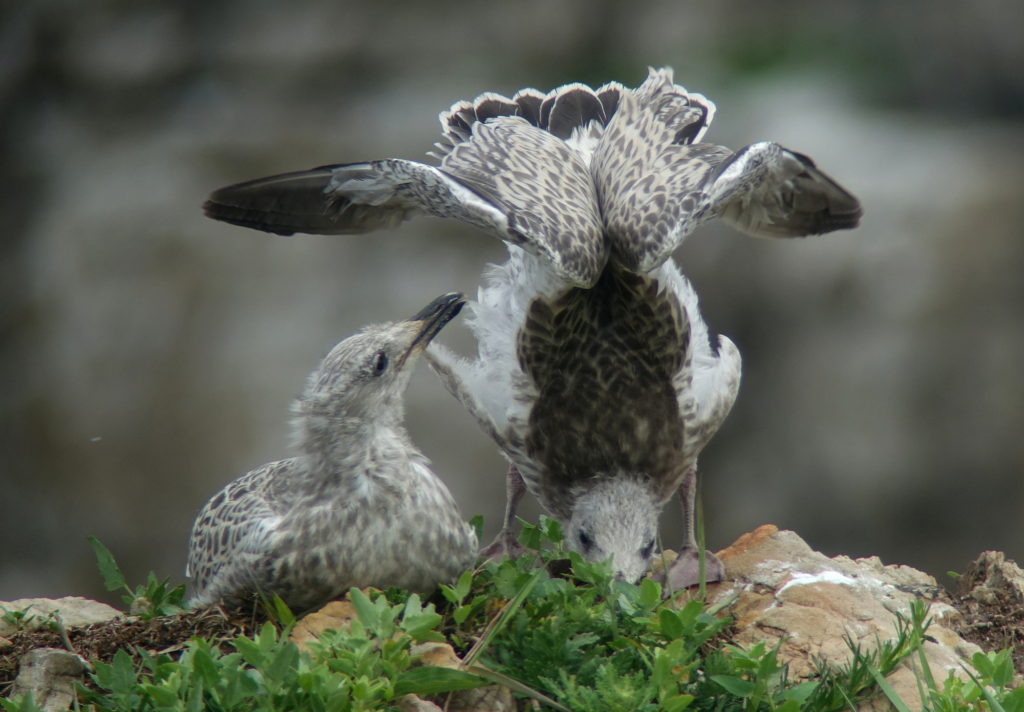 Mongolian Gull: tired parent, with very frayed primaries (above); two of the “kids” (below) © Nial Moores
Mongolian Gull: tired parent, with very frayed primaries (above); two of the “kids” (below) © Nial Moores
Black-capped Kingfisher Halcyon pileata. Only two birds were seen, both in the same area, with one of these carrying a frog for several minutes (presumably either to feed to a youngster or as part of their display).
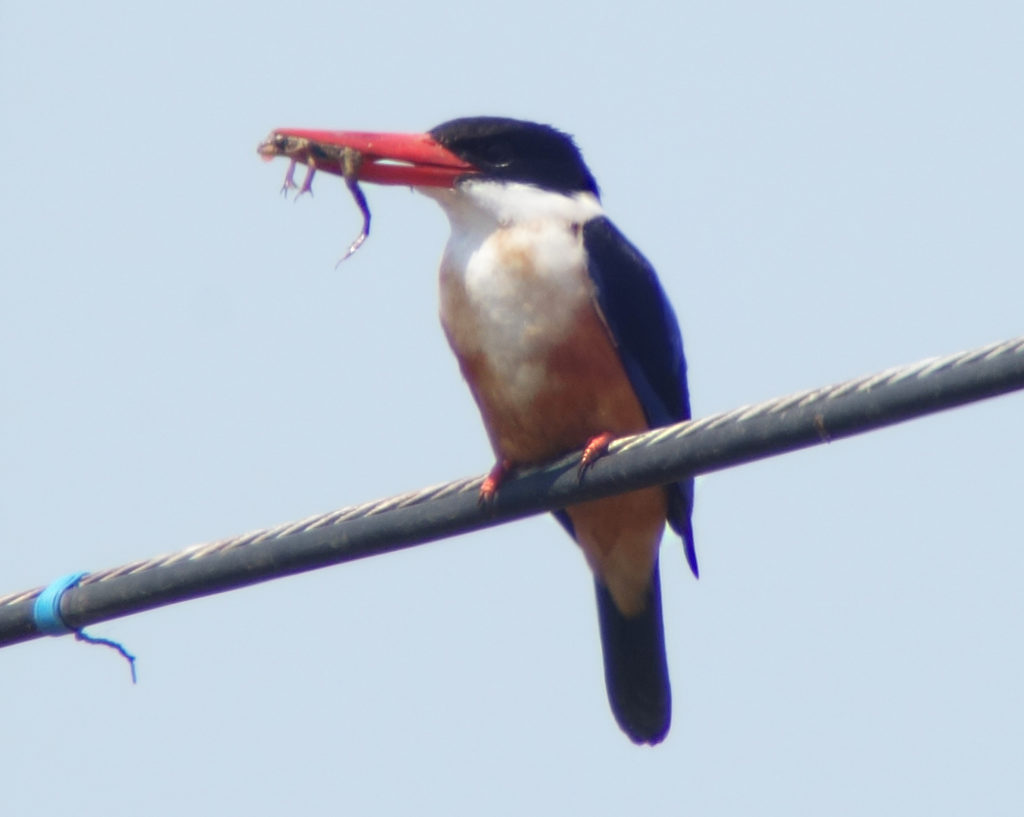 Black-capped Kingfisher carrying frog (anyone able to identify which species please?) © Nial Moores
Black-capped Kingfisher carrying frog (anyone able to identify which species please?) © Nial Moores
Tiger Shrike Lanius tigrinus. Probably 4-5 territories were identified. Quite a few areas of potentially good habitat on the island for this species were not checked.
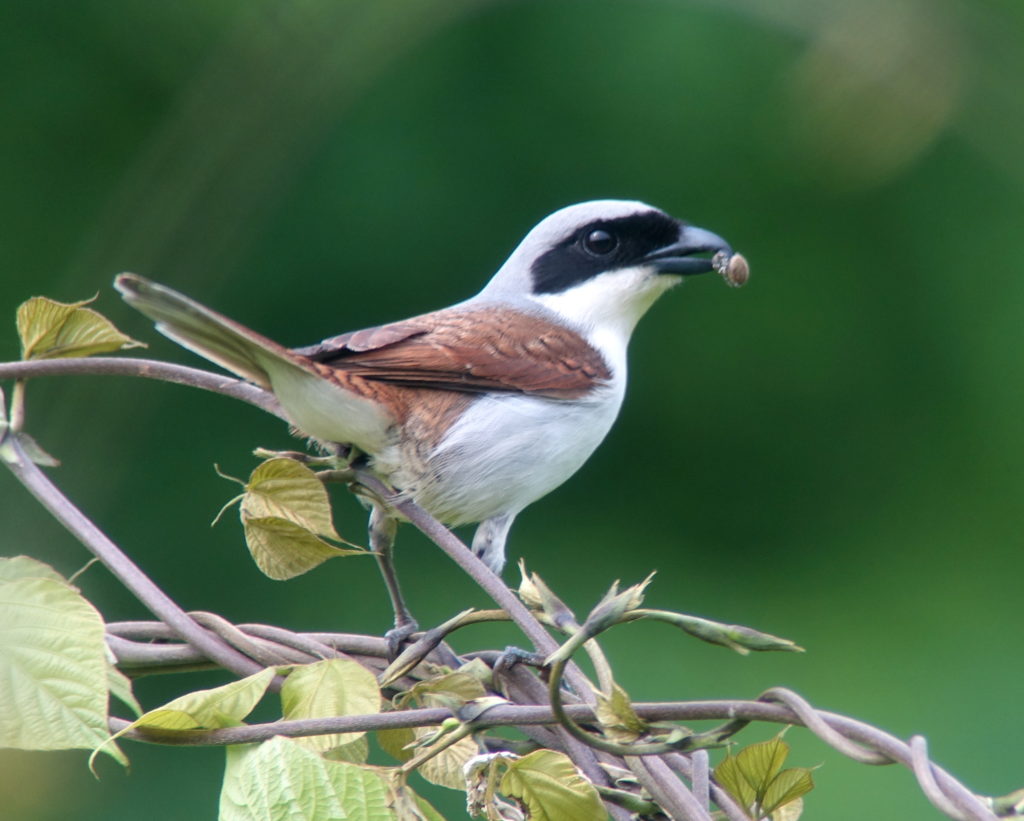 Tiger Shike © Nial Moores
Tiger Shike © Nial Moores
Brown Shrike Lanius cristatus. Three to four territories were located, with one lucionensis and the remainder confusus.
 Lucionensis Brown Shrike © Nial Moores
Lucionensis Brown Shrike © Nial Moores
Chinese Penduline Tit Remiz consobrinus. Four individuals in perhaps three territories were located – all in the same area as birds found breeding last year.
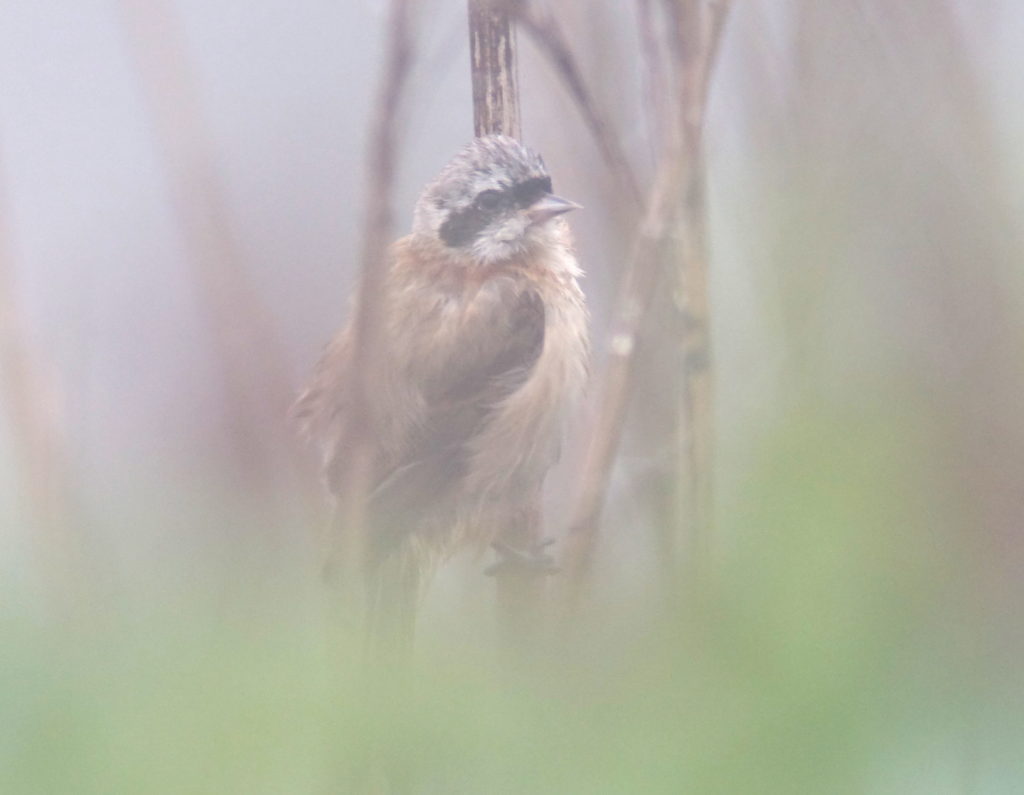 Chinese Penduline Tit half-hidden in the fog © Nial Moores
Chinese Penduline Tit half-hidden in the fog © Nial Moores
Forest Wagtail Dendronanthus indicus. At least eight singing birds were found. As with Tiger Shrike, many potentially good areas for this species were not surveyed.
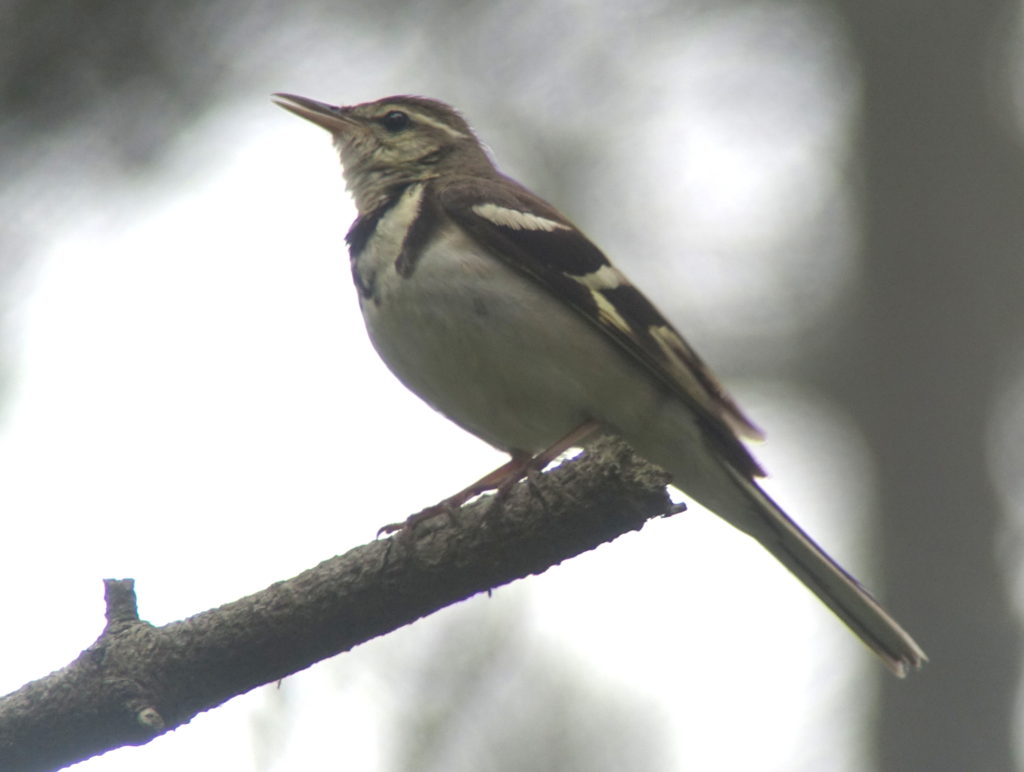 Forest Wagtail © Nial Moores
Forest Wagtail © Nial Moores
Red Crossbill Loxia curvirostra. Zero found during the present survey. However, a group of about 40 – including many young juveniles – were found on the island in May. If the May birds were harbingers of a mass irruption and not local breeders, then why were no birds heard or seen in June?
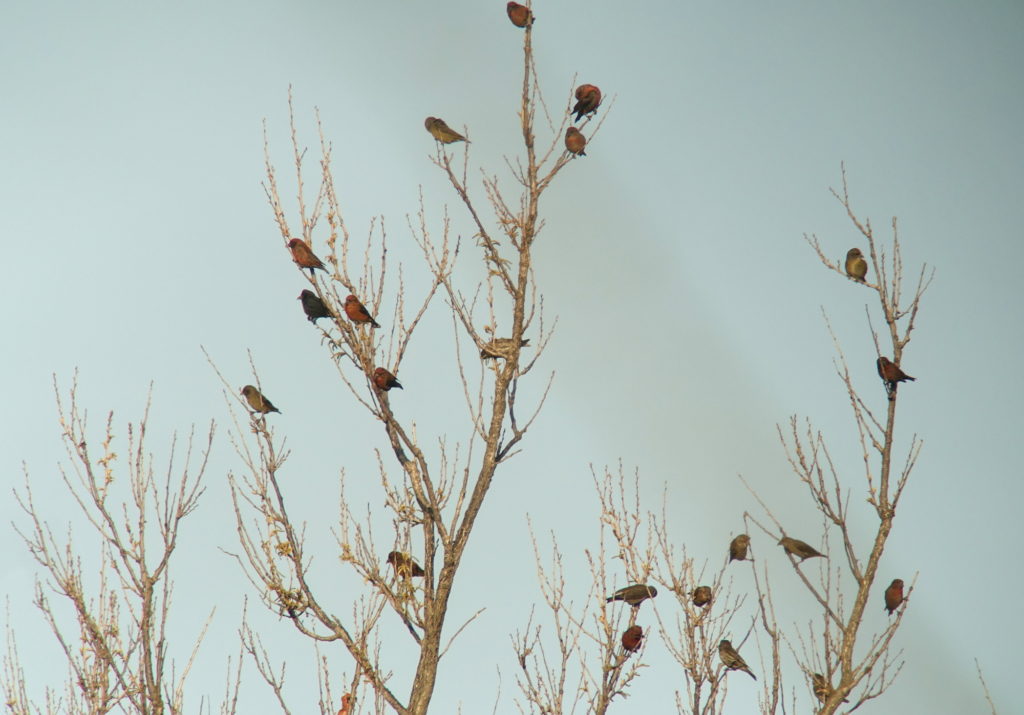
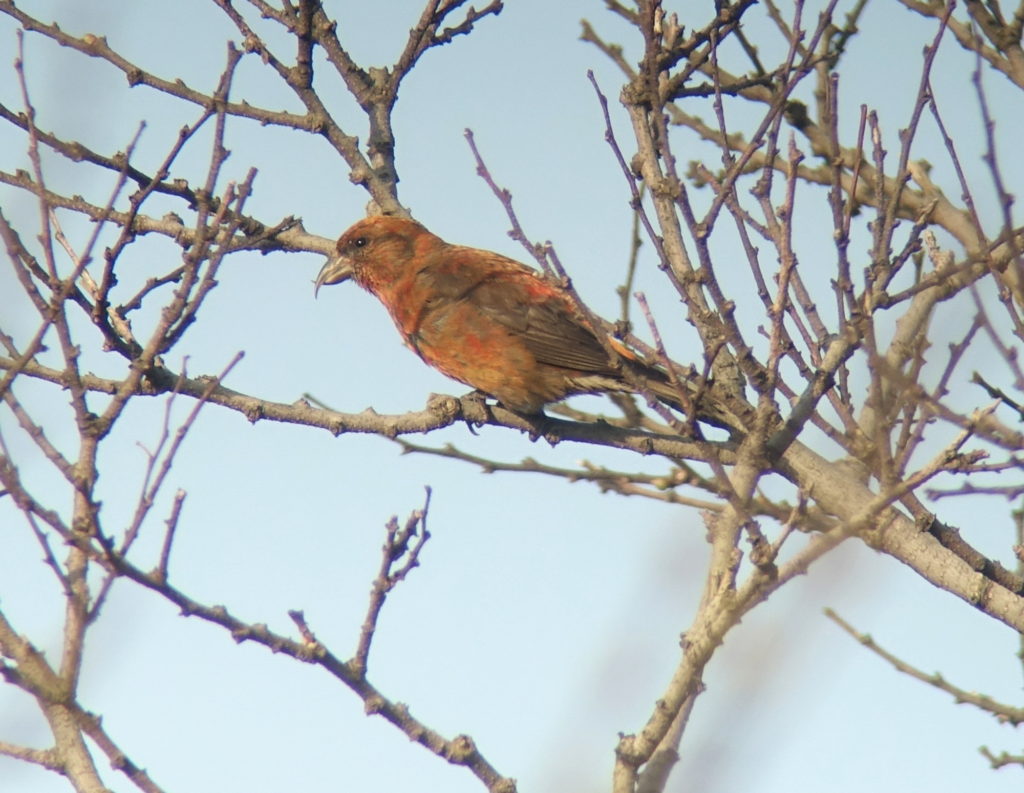
 Red Crosbills: flock (top); male (centre); and juvenile (bottom) © Nial Moores
Red Crosbills: flock (top); male (centre); and juvenile (bottom) © Nial Moores
Eurasian Siskin Spinus spinus. Two or three birds, including an adult male, were found on June 22nd. Views were insufficient to determine whether any of these were young.
Other wildlife of note included 2-3 Finless Porpoise Neophocaena phocaenoides; several stunning globally Near Threatened Large Coppers Lycaena dispar (please correct me if the ID is incorrect!); an Ussuri Mumushi Gloydius ussuriensis; and many hundreds of Boreal Digging Frog Kaloula borealis (nationally Endangered Class II) vocalizing across the island following heavy rain on the 26th.
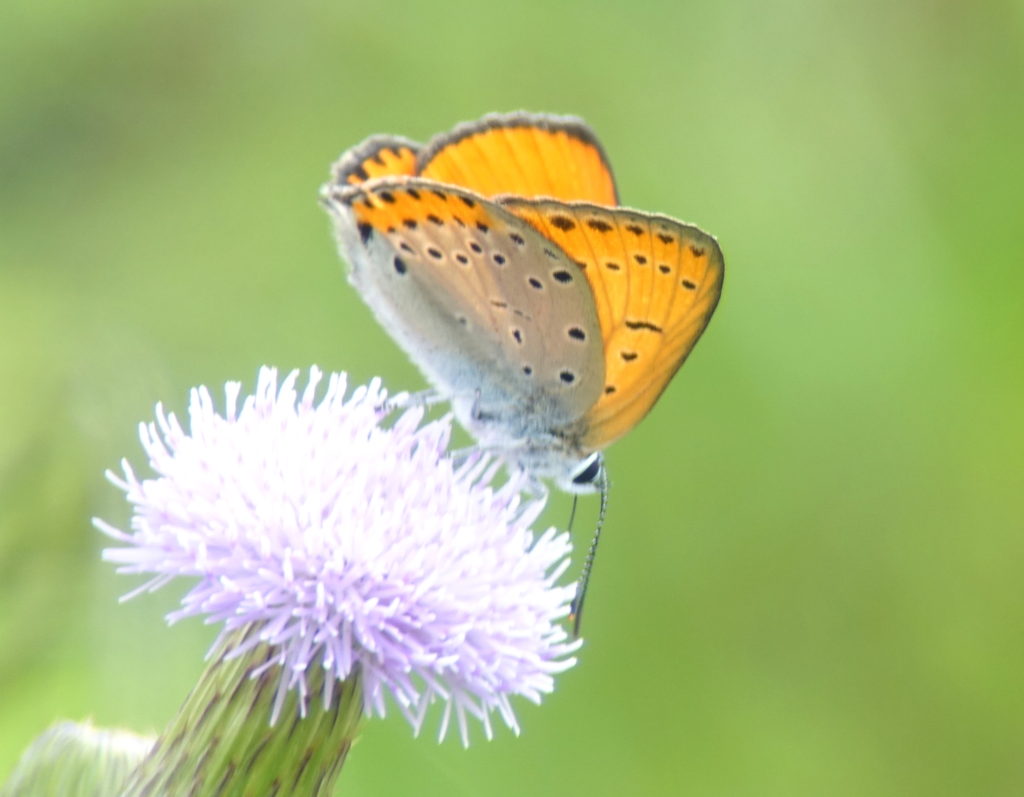
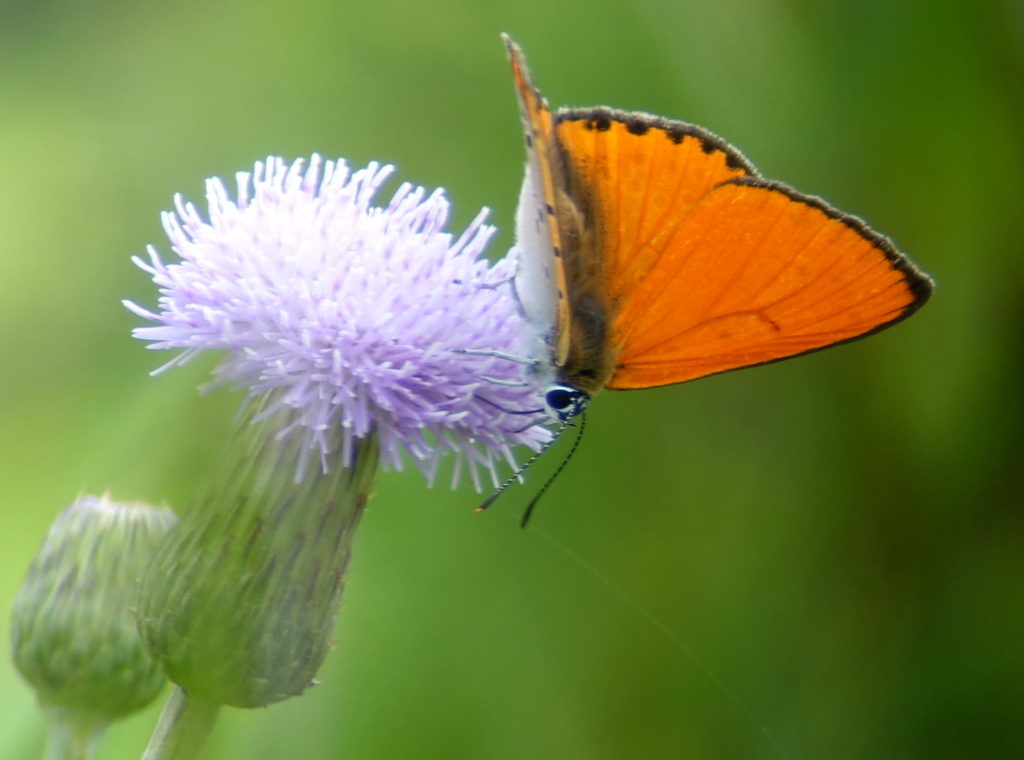 Large Copper: one of about ten seen on the wing in the same small wetland area © Nial Moores
Large Copper: one of about ten seen on the wing in the same small wetland area © Nial Moores

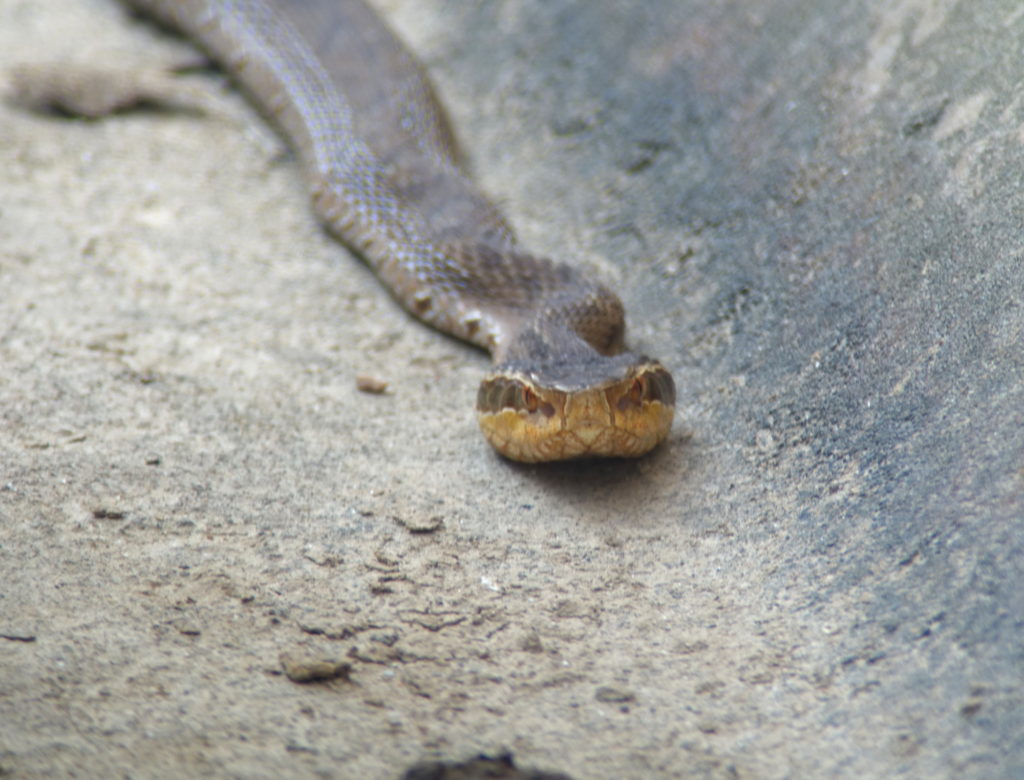 Ussuri Mumushi © Nial Moores (with thanks to Amael Borzee for help with ID).
Ussuri Mumushi © Nial Moores (with thanks to Amael Borzee for help with ID).

